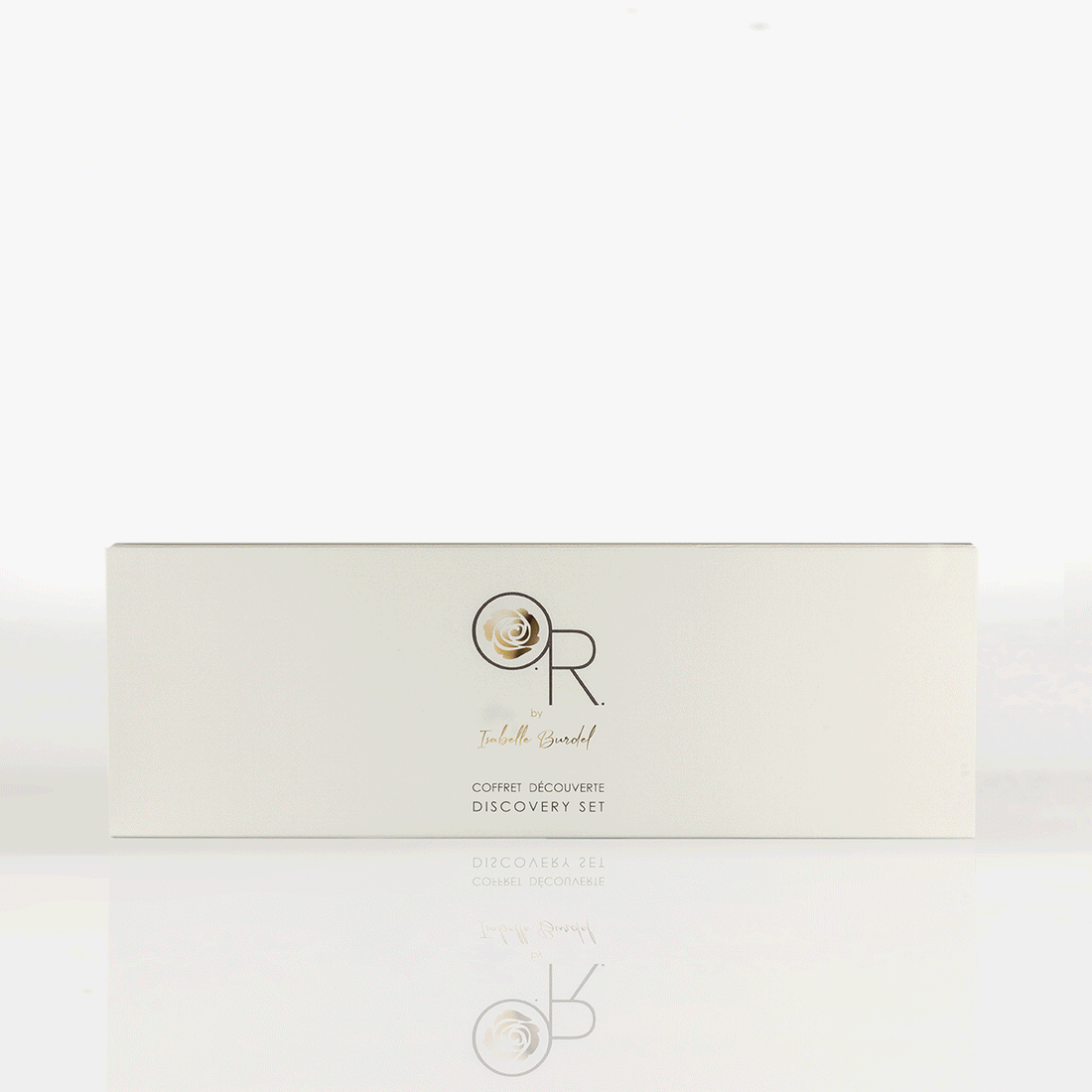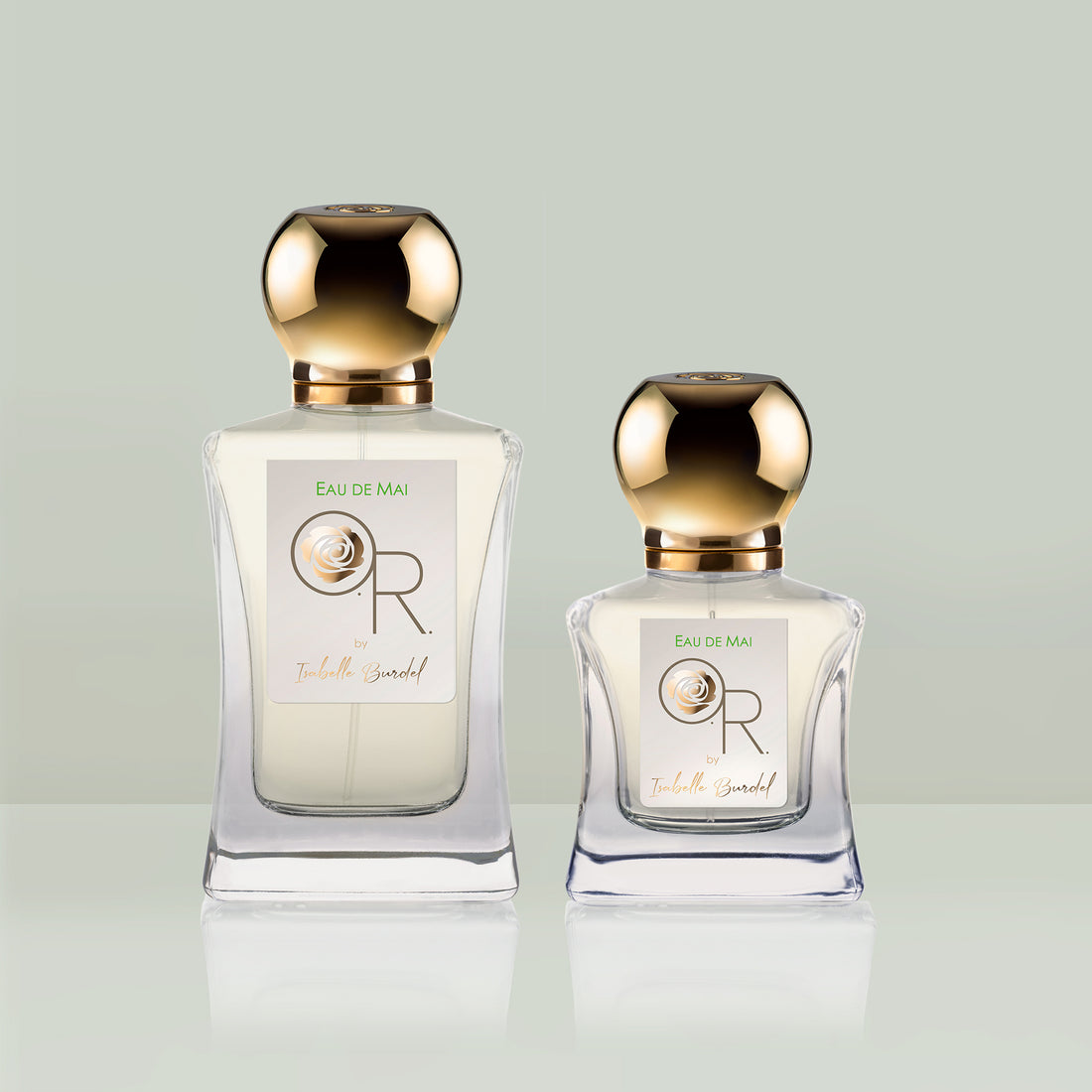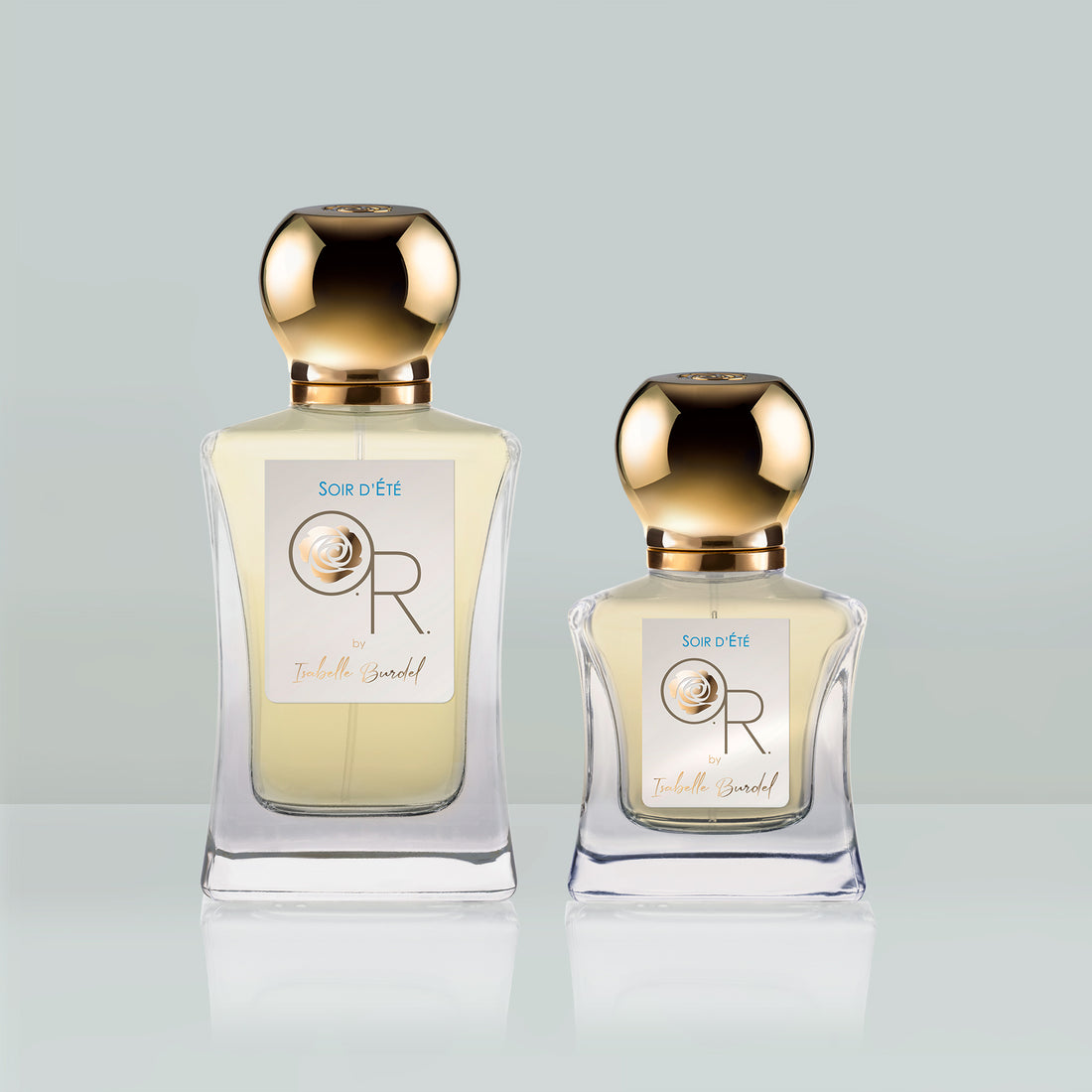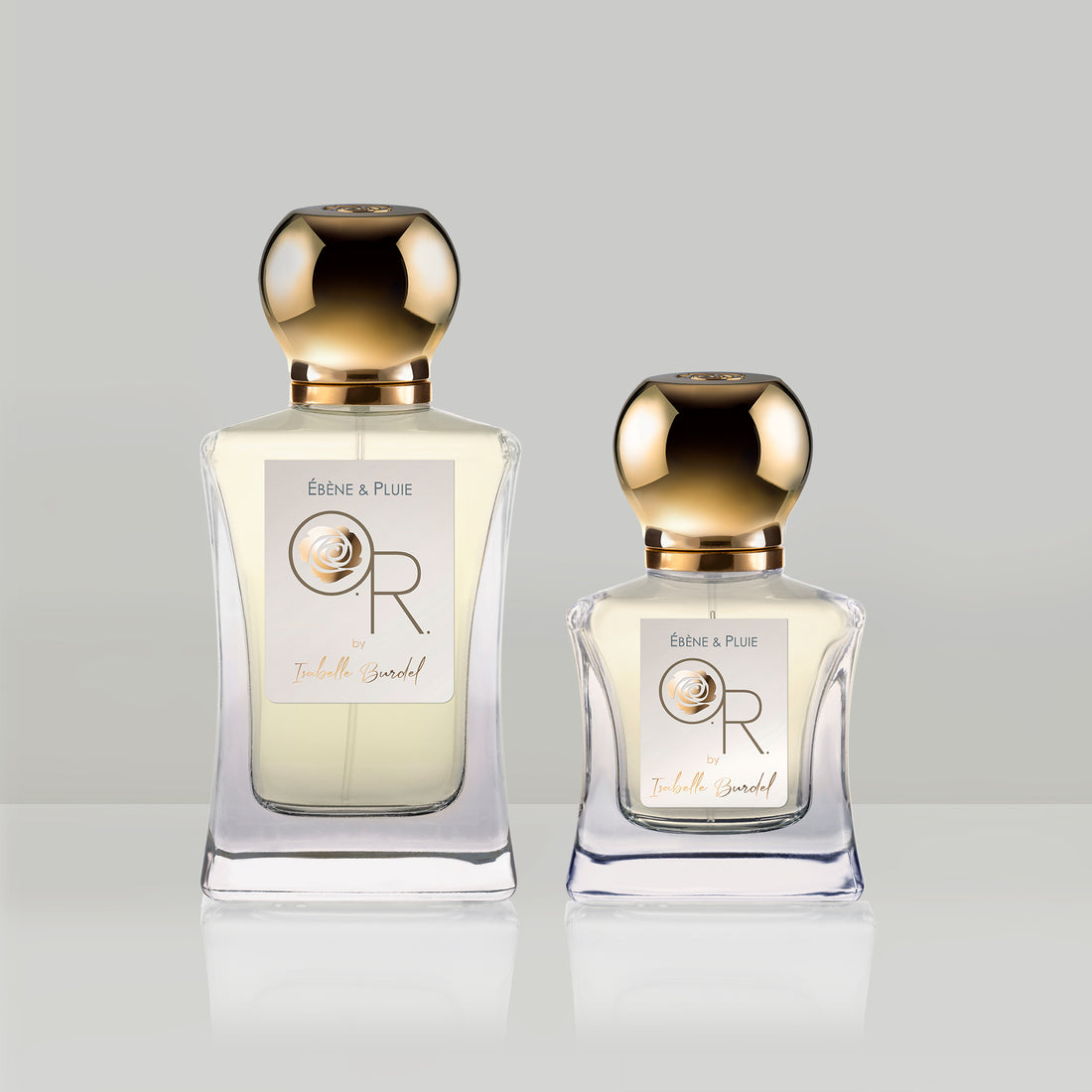The niche perfume sector has evolved significantly in recent years. From being an “perfume of author”, overshadowed by marketing and blockbusters, the "niche" has transformed into a lucrative market. Over the past decade, it has resembled a Monopoly game, with major corporations acquiring iconic brands in niche perfumery. Almost every day, a new confidential brand emerges, and launches follow at a frantic pace. But what do these niche perfumes have that others don't?
At the origins of niche perfume, authenticity
Niche perfumes did not wait for the drifts of the "mainstream" to emerge. Far from the early days of marketing, the 1970s saw the emergence of a more "intimate" perfumery. Diptyque, with its “Eaux”, was the first to step in, followed by L'Artisan Parfumeur, a house with poetic and avant-garde creations. The 80s/90s saw the birth of Annick Goutal, Patricia de Nicolaï, not to mention the indispensable Serge Lutens. These are unique universes, inspired by the imprint of their creator.
In the early 2000s, "selective" perfumery took on a more commercial and industrial turn. Major brands surfed on appealing trends, and creativity gradually diluted in consumer tests and fragrances designed to please the masses. While there are still beautiful exceptions, the offer tends to become more uniform. In the shadow of "blockbusters," part of the public seeks perfumery that ventures off the beaten path.
Niche perfume: restoring nobility to creation
In the early 2000s, author perfumery welcomed a second wave of creators who put emotion at the heart of perfume. Freedom of expression, liberated from marketing briefs, emerged, as seen in the Editions de Parfum Frédéric Malle, where the Nose has carte blanche to create niche perfumes without budget constraints. Mention should also be made of The Different Company, which focuses on cultivating the art of difference. A more daring perfumery without compromises, such as the olfactory choices of “Parfum d'Empire” or “Etat Libre d'Orange”.
This perfumery is also characterized by the use of exceptional ingredients, claimed by many houses. Non-conformity and sincerity attract an audience in search of rarity. This expectation has been well understood by David Frossard, with his label Différentes Latitudes, a true breeding ground for alternative perfume brands. This return to origins, closer to craftsmanship, brings a breath of fresh air to the perfume market.
Characteristics of niche perfume
Niche perfumery is supposed to embody an avant-garde vision of creativity. Because creators prioritize the cost of a formula over advertising and brand ambassadors, niche perfumes are composed of more noble ingredients. Beautiful natural or synthetic raw materials, carefully chosen to make the fragrance vibrate on the skin. A choice favored by the small production volumes of niche brands, as they cater to a less broad audience.
Isabelle Burdel, founder of Olfactory Revelation, meticulously sources the materials that make up her creations. Thanks to her extensive experience as a perfumer, she selects her materials from the best producers of perfumed plants. Each of her formulas is crafted without budget restrictions to express her vision of luxury.
In addition to beautiful materials, alternative perfumery also emphasizes the choice of luxurious packaging. Attention is focused on the quality of the glass or materials that make up the cap of a bottle, for example. It must reflect the aura of exclusivity of the perfumes imagined by the creator. Several creators offer bottle engraving to personalize their perfume. Niche perfume is also characterized by its rarity, as it is only distributed in certain confidential addresses.
As we will explain later, what distinguishes niche perfumery from selective perfumery is less evident at present. The considerable number of brands blurs the boundary between niche perfumes and mainstream fragrances.
Niche perfume: a freedom of tone that inspires
This then-new creativity, unburdened by the weight of marketing, gradually attracts major houses. Guerlain is one of the first to create exclusive lines, such as L'Art & La Matière, a line around the mythical notes of its heritage. With its Collection des Exclusifs, Chanel reissues some forgotten treasures (“Bois des Iles”, “Cuir de Russie”) in 2007, alongside new creations, combining elegance and quality of raw materials. These collections showcase other olfactory territories, offering precious elixirs to discerning enthusiasts.
For the past fifteen years, all major brands have embraced this phenomenon. They all offer "private" ranges, with fragrances that are finely crafted and often elitist in price. These major houses rely on a high-end positioning to conquer an audience of connoisseurs.
Addresses specifically dedicated to niche perfumery
Niche perfumes also fascinate with their aura of mystery. The first independent creators cultivate a certain discretion through confidential addresses. These are few in number, unknown to the general public, outside the traditional distribution networks. This guarantees a secret trail that is not encountered at every street corner.
The emergence of concept stores dedicated to this universe reinforces the success of niche perfume. They expand its influence with new brands and offer proximity to customers in the tradition of small perfumeries of yesteryear. While department stores, like Bon Marché or Printemps Haussmann, offer a beautiful selection, the Jovoy boutique, in 2012, renews the genre. Located near Place Vendôme, this "rare perfumes showcase" distributes nearly a hundred very confidential brands, valued by knowledgeable advice. In alternative perfumery, one seeks not only an exceptional fragrance but also the promise of personalized service.
This special attention is found in several Parisian boutiques, as well as throughout France. Almost every major provincial city now has a concept store dedicated to niche perfume. These addresses often coexist with the brands' own stores. You can also find confidential brands in luxury hotels. Like some palaces on the French Riviera, where you can discover creations crafted by Isabelle Burdel.
Niche perfume: the revival of sleeping beauties
The success of niche perfumes has also favored the return of prestigious old brands to the market. Most of these sleeping beauties are houses born under the Ancien Régime or in the Roaring Twenties, and then disappeared in the wake of the economic crisis of 1929 and World War II. Several wake up in the early 2000s, when a more singular perfumery flourishes, offering them an ideal foundation to relaunch on the market, at their own pace and in the shadow of the major brands. These old brands, once marginal, find a second wind in the niche perfume industry, embracing its quest for confidentiality and craftsmanship, whether real or mythified.
Among these, mention Santa Maria Novella, a splendid Florentine house that recently celebrated its 800th anniversary, or Lubin, perfumer to the French Royal Court in 1815, a house that remained prosperous until after the war, when Gilles Thévenin bought it in a declining state in 2003. Since then, it has significantly expanded its range and opened a boutique in the Saint-Germain des Prés neighborhood in Paris. Another icon of the genre, Houbigant, a famous house that survived the French Revolution, gradually declined from the post-war period to the 80s. It was reborn in the early 2000s, establishing itself in several prestigious addresses and collaborating with great perfumers such as Jean-Claude Ellena.
The explosion of niche perfume brands
In the early 2000s, niche perfume offered a creative playground for perfumers, synonymous with originality and uniqueness for the public. However, some brands gradually adopt a more commercial logic, reminiscent of mainstream perfumery, prioritizing quantity over quality. Indeed, over the past decade, niche perfumery has entered into a relentless quest for novelty. However, this expectation no longer only comes from the public but also from department stores and concept stores, demanding one to two new releases per year from creators, often pleasant fragrances, sometimes refusing to distribute those deemed too polarizing within the same range. This can alter the singularity of a house.
The acquisition of niche brands by major groups is another phenomenon affecting author perfumery. In 2015, the Estée Lauder Group acquired Le Labo, then Editions de Parfum Frédéric Malle, while Puig acquired L'Artisan Parfumeur. Niche perfume brands became attractive, capturing 10% of the high-end market share that year. Distribution is in the hands of major groups as they monopolize space in department stores. In this context, it becomes challenging for a small house to stand out against giants like L'Oréal or Estée Lauder. The originality that consumers seek in a small brand can wither under the weight of profitability requirements imposed by these major groups. Moreover, the arrival of some alternative brands on online platforms can also be a cause for concern.
In the shadow of this evolution, there are still confidential houses, fond of daring or intimate perfumery. Among these, Olfactory Revelation, a brand founded by perfumer Isabelle Burdel, offers a unique experience.
Olfactory Revelation, a niche perfume brand by Isabelle Burdel
A perfumer for over 35 years, Isabelle Burdel has been independent for nearly 20 years. In the heart of her private salon in Cannes, she creates bespoke fragrances for a diverse, international clientele in search of an exclusive olfactory signature.
From this creative experience, the brand Olfactory Revelation by Isabelle Burdel was born. O.R. (Olfactory Revelation), two initials that evoke gold in French, a precious material reflecting her philosophy. That of sublimating the ingredients of perfumery through the richness of her fragrances, with a delicate and poetic touch. An ode to nature that consists of a range of nine perfumes, combining elegance, longevity, and creativity. The springtime joy of “Eau de Mai”, the radiant sensuality of “Tubéreuse Solaire”, the playful and fruity charm of “Vent Bohème”, the woody depth of “Ebène and Pluie”, and many more... Exceptional niche perfumes to discover at the heart of a rare and confidential collection. Nine creations that Isabelle Burdel crafted with creative freedom and refined expertise. The pure bottle, with subtle curves, a magnetic cap, and adorned with an iconic rose signature, dresses each perfume in a sophisticated container.
The niche perfume on the international stage
If there is a flagship of French culture, niche perfume also shines abroad. For example Italy, another country of luxury and elegance, where olfactory culture seems to express itself with more openness than in France, with over 400 niche perfume boutiques. Author's perfumery thrives particularly well there, as two specialized events are held each year: Esxence in Milan in March and Pitti Fragranze in Florence in September. Famous niche houses have originated there, such as Acqua Di Parma or Etro, initiating the movement in the 90s. The ancient Florentine pharmacy of Santa Maria Novella is among the traditional houses sought after by perfumistas today. An appetite for niche perfumes fueled by the abundance of small brands in this market. While they sometimes struggle to establish themselves in France, they find a warm welcome in Italy, where consumers are more easily tempted by unknown names and scents.
For the past fifteen years, the Middle East has been a highly coveted market for niche perfume brands. As the cradle of perfumery since ancient times, this region has always cultivated an intense relationship with the sense of smell. In Ancient Egypt, incense and resins were burned in honor of the gods, a sacred ritual from which the perfume derives its name (per fumum: through smoke). Today, perfume remains highly prized in the Middle East. Because of its real purchasing power, Western brands are courting it, a phenomenon increased by the success of oud wood, also known as agarwood. People in the Middle East have always loved its woody, smoky, and leathery nuances. Aromatic notes that have, in turn, conquered the West for the past fifteen years. While perfumers find a new essence to enrich their palette of animal facets, brands also see it as an asset to attract this clientele. All niche houses have since endowed their niche perfumes with oud wood accords, although due to its prohibitive price, a synthetic version is often used to reproduce its effects.
But the true new Eldorado of niche perfume today is Asia. Brands are expanding and opening personalized corners, especially in Korea. Concept stores are also not lagging behind, as Jovoy recently established itself there. Brands also have China in their sights, a promising but complex market, where Diptyque and L'Artisan Parfumeur, for example, shine. Contrary to stereotypes, China looks at niche perfumery with fresh eyes, with enthusiastic, curious, and eager-to-try new things consumers. Less aware of brand hierarchies, Chinese consumers are less "formatted," an advantage for creators who find real freedom of expression there. This is especially true as it is a very attractive market: it is estimated that 2.5% of people use perfume in China, a significant figure when compared to a population exceeding 1.4 billion people in 2022. It is a rapidly expanding market, with phenomenal growth potential.
Discovering niche perfumes
The quest for the ideal niche perfume, one that suits your tastes and personality, is an exhilarating journey that requires patience and curiosity. A true olfactory journey that will take you to the heart of confidential addresses, where you can discover a selection of alternative brands. Expert advice in stores will guide you towards fragrances suitable for your olfactory profile.
Events celebrating this perfumery have multiplied in recent years. Trade shows dedicated to niche perfumery will allow you to interact with creators to understand their universe. Olfactory workshops immerse you in the perfumer's palette: an opportunity to better understand the ingredients of perfumery and put words to your feelings to refine your knowledge.
Communities of niche perfume enthusiasts also offer a rich space for sharing, where you can gather valuable advice to discover new olfactory gems. The internet, finally, is a veritable mine of information on the subject. Online magazines (Fragrantica, Nez la revue, Auparfum...), blogs, or educational sites specific to brands willingly reveal the behind-the-scenes of this universe. Like the Olfactory Revelation site, where you can discover in more detail each fragrance by Isabelle Burdel, her creative process, and her love for beautiful raw materials.
Finally, advances in Artificial Intelligence have allowed the creation of applications to find the rare gem through specialized recommendations based on algorithms. Examples include Sniff, founded by perfume influencer Demi Rawling, the Perfume Sommelier, or Scentissime.
From niche perfume to bespoke…
If exceptional perfumery has a bright future ahead, the ultimate luxury could be that little extra: a bespoke perfume. A hand-sewn signature, tailored to our every desire. An extravagant dream woven by the great names in perfume, although there are some more accessible alternatives. Among them, Guerlain, of course, which composed “Eau de Cologne Impériale” for Empress Eugénie in 1853, thus establishing its reputation at the Court. This tradition is still perpetuated today through a bespoke service. Over several sessions to map the client's olfactory profile and several trials and safety checks, the client will receive two liters of a formula that belongs to them for life, for a price of around 40,000 euros. An exceptional perfume that will be delivered in a two-liter Baccarat bottle, adorned with 20 other smaller bottles.
The Cartier line of perfumes, qualitative and finely crafted, illustrates the style and refinement of the jeweler, thanks to the talent of in-house perfumer Mathilde Laurent. Her keen nose allows her to satisfy the demands of privileged enthusiasts in search of a unique signature. Following a one-on-one interview, Mathilde Laurent sketches several proposals, which she refines through ongoing dialogue with the client until she achieves the right note. An "author's work" that, for 60,000 euros, comes dressed in two gold and crystal bottles in a red leather case, three rechargeable spray bottles, a travel case, and 500 ml refills, guaranteed for life.
Isabelle Burdel has been providing her expertise to a demanding clientele for 18 years at her Salon Privé in Cannes. In this intimate setting, she imagines bespoke perfumes through one or several appointments, translating her clients' emotions into fragrance to reveal their personality. At the end of this "dialogue," she creates unique olfactory signatures for a clientele seeking exclusivity.
As you can see, niche perfume has evolved a lot since the 70s, but it still carries that aura of mystery and rarity that we always seek through a fragrance. While niche perfumery today takes on various faces, from attractive brands driven by major groups to ultra-alternative small labels, some independent creators continue to give niche perfume its letters of nobility. Like Isabelle Burdel and her Olfactory Revelation range.






